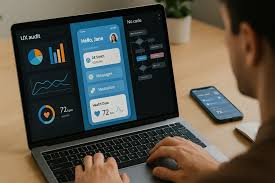Enhancing Stakeholder Engagement with Interactive Sustainability Reporting Tools
In today’s rapidly evolving business landscape, the importance of sustainability reporting cannot be overstated. It serves as a vital tool for companies to communicate their environmental, social, and governance (ESG) performance to stakeholders, including investors, customers, employees, and the wider community. However, traditional sustainability reporting often falls short in truly engaging stakeholders beyond mere numbers and metrics. This is where interactive sustainability reporting tools come into play, offering a dynamic and immersive way to communicate sustainability efforts and outcomes. In this blog post, we’ll explore the concept of interactive sustainability reporting tools and how they can enhance stakeholder engagement.
Understanding Interactive Sustainability Reporting Tools
Interactive sustainability reporting tools represent a departure from traditional static reports, such as PDF documents or printed reports. Instead, these tools leverage technology to create engaging and interactive experiences for stakeholders. They encompass a variety of formats, including online dashboards, data visualization platforms, interactive websites, and mobile applications. By integrating multimedia elements such as videos, infographics, interactive maps, and real-time data updates, these tools offer a more immersive and compelling way to communicate sustainability performance.
Benefits of Interactive Sustainability Reporting Tools
1. Enhanced Stakeholder Engagement: Interactive tools facilitate two-way communication between companies and stakeholders, allowing for greater engagement and interaction. Stakeholders can explore data, ask questions, provide feedback, and share insights, fostering a deeper understanding of sustainability initiatives and outcomes.
2. Transparency and Accountability: Interactive reporting promotes transparency by providing stakeholders with access to detailed information about a company’s sustainability performance. Real-time updates and interactive features enable stakeholders to track progress, identify areas for improvement, and hold companies accountable for their commitments.
3. Improved Accessibility: Unlike traditional printed reports, interactive tools are easily accessible across various devices and platforms, making it easier for stakeholders to access information anytime, anywhere. This increased accessibility ensures that a wider audience can engage with sustainability reporting, including investors, customers, employees, and the general public.
4. Data Visualization and Storytelling: Interactive tools leverage data visualization techniques to transform complex sustainability data into visually compelling narratives. Through interactive charts, graphs, and infographics, stakeholders can easily interpret data trends, understand key insights, and grasp the broader impact of sustainability initiatives.
5. Customization and Personalization: Interactive reporting tools allow stakeholders to customize their experience based on their interests and preferences. Users can explore specific areas of sustainability performance, filter data based on relevant criteria, and personalize their engagement with the reporting content.
Examples of Interactive Sustainability Reporting Tools
Several sustainability reporting companies have embraced interactive tools to enhance stakeholder engagement. For example, some companies have developed interactive dashboards that provide real-time updates on key sustainability metrics, allowing stakeholders to track progress and performance over time. Others have created interactive websites or mobile applications that offer multimedia content, interactive maps, and storytelling features to communicate sustainability initiatives in a more engaging manner.
Conclusion
In conclusion, interactive sustainability reporting tools represent a powerful way for companies to enhance stakeholder engagement and communicate their sustainability efforts effectively. By leveraging technology to create immersive and interactive experiences, these tools facilitate greater transparency, accountability, and accessibility in sustainability reporting. As companies continue to prioritize sustainability and stakeholder engagement, interactive reporting tools will play an increasingly important role in driving meaningful dialogue and action towards a more sustainable future.
Through the adoption of interactive sustainability reporting tools, companies can not only meet the growing demand for transparency and accountability but also foster deeper connections with their stakeholders, ultimately driving positive change and creating shared value for all.






